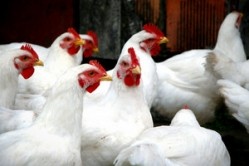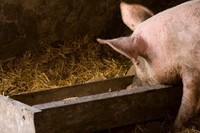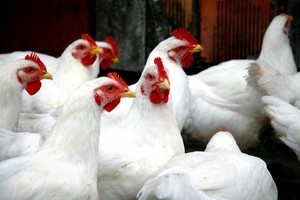South Asia poultry sector first on US enzyme developer's regional hit list

“Working with new partners, we are targeting regions, rather than having a global launch for Xylamax.
Our initial focus is on markets where grain prices are high, and where, subsequently, a lot of alternative feed inputs are used such as in countries like India but also in Pakistan, Sri Lanka, Nepal, Bangladesh and Bhutan. Our goal is to save money for the end user,” Dr Giles Shih, CEO of BRI told feednavigator.
BRI is teaming up with pharma and life sciences company, Jubilant, to market and distribute the enzyme and an associated testing kit to large and small scale poultry producers, feed integrators, and animal health and nutrition consultants in South Asia.
“The Latin American poultry segment, also experiencing high feed costs, is most likely next in line. We see a lot of opportunities for the product there, and we have already initiated some trials with broilers and layers in Brazil. But we remain on the lookout for a partner company for that region,” said the CEO.
Most reactive markets on registration first on hit list
The initial target markets are, evidently, also the ones with the most streamlined regulatory processes.
“North America, South East Asia, and Europe are to follow. But the trajectory of Xylamax’s roll-out really depends on how responsive the regulatory procedure is in each region.
We have already initiated the registration process with the FDA in the US but that can take one to two years, maybe more. Each country in South East Asia has specific registration rules. With India, it certainly was not as cumbersome,” said Dr Shih.
BRI’s R&D operations are based at its North Carolina headquarters and it partners with suppliers in Asia on production. “Our rationale is to be close to market,” said the CEO.
Feed formulation
The enzyme developer will work closely with Jubilant in terms of ensuring Xylamax addresses the feed formulation needs of poultry producers in South Asia by testing it in various diet combinations, he continued.
“Trials have shown the enzyme to be effective in gaining more nutritive value from sorghum, rice and distillers’ grains (DDGS). It has also been tested in both wheat and corn-soybean diets and has performed extremely well,” added Dr Shih.
Xylamax breaks down non-starch polysaccharides (NSP) in grain cell walls, activating the release of valuable nutrients for digestion by the animal's natural enzymes, he explained.
The enzyme also reduces the viscosity of intestinal contents by more than 50%, which accelerates nutrient digestion, he said.
All these components combined, said the CEO, means it optimizes energy availability to the animal, resulting in improved growth and gut health.
The benefits of Xylamax are also being explored for the swine sector. “But its early days still on this score,” said the CEO.


![The addition of xylanase to wheat base diets decreased digesta viscosity and fermentation, increased nutrient digestion and digesta passage, and reduced the amount of nutrients available to the microflora: study [pic: (c) istock.com Sage78]](/var/wrbm_gb_food_pharma/storage/images/_aliases/wrbm_medium/1/1/9/3/1423911-1-eng-GB/Producer-makes-the-case-for-enzymes-in-shift-away-from-AGPs.jpg)








